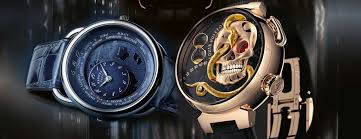The Evolution of Watch Cases: Traditional to Contemporary Designs
In the realm of horology, the watch case stands as a testament to both form and function. Serving as the protective housing for the intricate mechanisms within, watch cases have undergone a fascinating evolution over the centuries. From the traditional to the contemporary, these designs reflect not only advancements in technology but also shifting aesthetic preferences and cultural influences.
Traditional Elegance: A Tribute to Craftsmanship
In the early days of watchmaking, watch cases were primarily crafted from precious metals such as gold and silver. These cases were often adorned with intricate engravings or enamel work, showcasing the skill and artistry of the craftsmen. The designs were characterized by their elegance and timelessness, serving as status symbols for the elite.
One of the most iconic traditional watch case designs is the hunter case, which features a hinged cover to protect the watch dial. This design, popularized in the 19th century, added an extra layer of sophistication to pocket watches, what is the case on a watch them both functional and aesthetically pleasing.
The Rise of Stainless Steel: Modernity Meets Durability
As the 20th century dawned, stainless steel emerged as a game-changer in watch case construction. This durable and corrosion-resistant material offered a more affordable alternative to precious metals while retaining a sleek and polished appearance. Stainless steel cases became synonymous with utility and reliability, making them popular choices for everyday wear.
The introduction of waterproof and shock-resistant watches during this period also influenced case design. Brands like Rolex pioneered innovative case constructions, such as the Oyster case, which featured a hermetically sealed design to protect the movement from water and dust. These developments marked a shift towards more functional and utilitarian designs, catering to the needs of an increasingly active lifestyle.
Minimalism and Innovation: The Contemporary Aesthetic
In recent decades, the watch industry has witnessed a resurgence of interest in minimalist and avant-garde designs. Contemporary watch cases often feature clean lines, understated dials, and unconventional materials, reflecting a shift towards simplicity and individuality.
One notable trend in contemporary watch case design is the use of titanium and ceramic. These lightweight yet durable materials offer a modern twist on traditional metal cases, appealing to a younger generation of watch enthusiasts who value performance and versatility.
Moreover, advancements in manufacturing techniques, such as CNC machining and 3D printing, have opened up new possibilities for creative expression in watch case design. From geometric shapes to asymmetrical forms, contemporary watch cases push the boundaries of conventional aesthetics, offering collectors a diverse range of options to suit their personal style.
Bridging the Past and the Future: Heritage Reimagined
Despite the influx of modern innovations, many watchmakers continue to pay homage to traditional craftsmanship in their designs. Heritage-inspired watch cases, reminiscent of vintage models, evoke a sense of nostalgia while incorporating modern features for enhanced performance and reliability.
For example, brands like Omega and Tudor have reintroduced classic case designs from their archives, updating them with contemporary materials and movements. These reinterpretations preserve the timeless appeal of vintage watches while ensuring they remain relevant in today’s fast-paced world.
Conclusion: A Tapestry of Innovation and Tradition
The evolution of watch cases from traditional to contemporary designs is a testament to the enduring allure of horology. From the opulence of precious metals to the sleekness of modern materials, watch cases reflect the ever-changing tastes and preferences of collectors.
As we journey into the future, it is certain that watch case design will continue to evolve, driven by a relentless pursuit of innovation and a reverence for the past. Whether classic or cutting-edge, the watch case remains an essential element of the timepiece, encapsulating both its history and its future.
Top of Form


